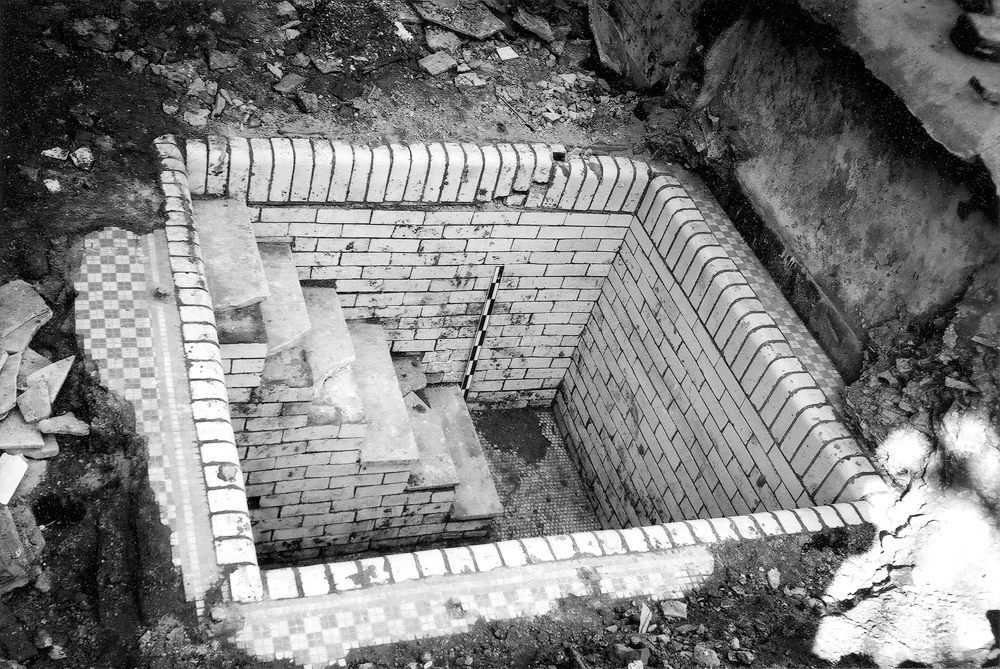By Anya Gruber

Strawbery Banke guide Christina Errico offers public interpretation of the mikveh to visitors.
Photo Credit: Strawbery Banke Museum
Narrow stone steps lead to a large, white-tiled basin filled with fresh water softly lit by a few rays of sunlight slipping in through a small window. The air is cool and still—suited for contemplation, reflection, purification, and healing. This mikveh—meaning “gathering of waters”— is a Jewish ritual bath used in the 19th-century and mikva’ot (the plural of “mikveh”) remain a staple of observant Jewish communities today. Jewish immigrants in the diaspora brought along unique traditions from around the world. Mikva’ot are associated with synagogues and are often housed within the same building or a short distance away. Jewish law— or halakha—instructs that mikva’ot have specific regulations to be considered kosher and must contain at least 40 se’ah of water in the bath—about 200 gallons—when one is immersed. The contents of the bath must be mayim hayim (living waters) from naturally occurring sources, such as a spring, rainfall, or melted snow, and must flow into the pool without human interference. The water may be kept in a cistern prior to flowing into the bath, and it should run through pipes in or near the ground. The purpose of immersion in a mikveh is not for physical cleanliness, but for spiritual cleanliness. Traditionally, women most often frequented the mikveh—particularly prior to marriage, following menstruation or the birth of a child—but people of all genders use them.
Many mikva’ot are several thousand years old, such as in the ancient Jewish city of Sepphoris, Israel. But in the northeastern United States, archaeological evidence of mikva’ot are rare, despite the influx of Jewish immigrants in the 19th and 20th centuries. Three such sites across the northeast—in New York, Connecticut, and New Hampshire—contain the remains of ritual baths associated with vibrant early Jewish-American communities and provide an intimate glimpse into the lives of Jewish immigrants in a newfound nation. Nineteenth and early 20th century Jewish immigrant life was persistent in its adherence to ancient traditions, but the complexity of halakha led to different interpretations and varying practices—even within what is considered kosher. Archaeological evidence of mikva’ot in the northeastern United States reveals that changing mores called for practical adjustments for Jewish communities settling in a new country.
This is an excerpt of Mikva’ot in the Northeast give glimpses of 19th-century life in Jewish immigrant communities, Winter 2024-25 | Vol. 28 No. 4. Subscribe to read the full text.
FURTHER READING
New England Hebrew Farmers of the Emanuel Society
The Lower East Side’s Synagogue, Tenement, and Russian Bathhouse: Mikva’ot and the Excavation of a Mikvah at 5 Allen Street, Celia Bergoffen (American Jewish History, 2017)
Summary Site Report: Archaeological Investigations of the Mikveh House at the New England Hebrew Farmers of Emanuel Society Site, Chesterfield, Montville, Connecticut, Nicholas Bellantoni and Stuart Miller (2012)
Living Waters, Living History: A Twentieth-Century Mikveh in Portsmouth, New Hampshire, Alexandra Martin (Historical Archaeology, 2022)




